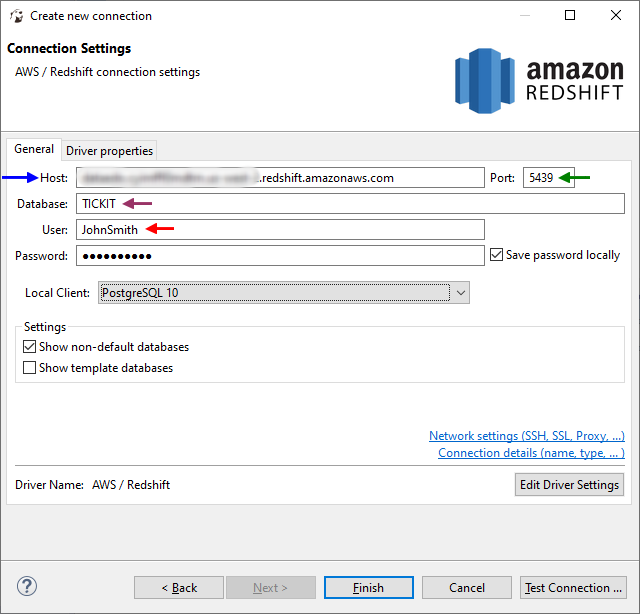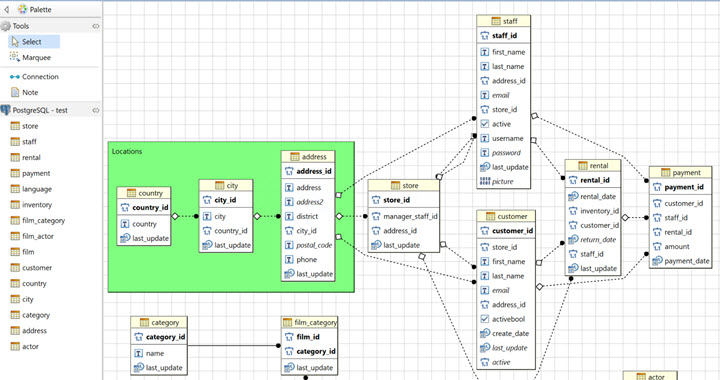- Dbeaver Sql Server Jobs
- Sql - DBeaver, How To Declare Variables And Use Them? - Stack ..
- Dbeaver Sql Server 2019
Universal Database Tool Free multi-platform database tool for developers, database administrators, analysts and all people who need to work with databases. Supports all popular databases: MySQL, PostgreSQL, SQLite, Oracle, DB2, SQL Server, Sybase, MS Access, Teradata, Firebird, Apache Hive, Phoenix, Presto, etc. Recovering work after SQL Server Management Studio crashes. Imagine a situation of working in SSMS, and suddenly the power goes out, the system gets crashed, SSMS gets crashed or the work session was abruptly terminated for any other reason, which causes the loss of unsaved work on various SQL scripts. DBeaver Universal Database Tool Free multi-platform database tool for developers, database administrators, analysts and all people who need to work with databases. Supports all popular databases: MySQL, PostgreSQL, SQLite, Oracle, DB2, SQL Server, Sybase, MS Access, Teradata, Firebird, Apache Hive, Phoenix, Presto, etc. I planed to explain about the databases in Identity Server and testing the local database setup with the Identity database of the WSO2 Identity Server in the DBeaver. WSO2 Identity Server supports.
Dbeaver Sql Server Jobs

The CData JDBC Driver for SQL Server implements JDBC standards that enable third-party tools to interoperate, from wizards in IDEs to business intelligence tools. This article shows how to connect to SQL Server data with wizards in DBeaver and browse data in the DBeaver GUI.
Create a JDBC Data Source for SQL Server Data
Follow the steps below to load the driver JAR in DBeaver.
- Open the DBeaver application and, in the Databases menu, select the Driver Manager option. Click New to open the Create New Driver form.
- In the Driver Name box, enter a user-friendly name for the driver.
- To add the .jar, click Add File.
- In the create new driver dialog that appears, select the cdata.jdbc.sql.jar file, located in the lib subfolder of the installation directory.
- Click the Find Class button and select the SQLDriver class from the results. This will automatically fill the Class Name field at the top of the form. The class name for the driver is cdata.jdbc.sql.SQLDriver.
- Add jdbc:sql: in the URL Template field.
Create a Connection to SQL Server Data
Follow the steps below to add credentials and other required connection properties.

- In the Databases menu, click New Connection.
- In the Create new connection wizard that results, select the driver.
- On the next page of the wizard, click the driver properties tab.
Enter values for authentication credentials and other properties required to connect to SQL Server.
Connecting to Microsoft SQL Server
Eicon driver. Connect to Microsoft SQL Server using the following properties:
- Server: The name of the server running SQL Server.
- User: The username provided for authentication with SQL Server.
- Password: The password associated with the authenticating user.
- Database: The name of the SQL Server database.
Connecting to Azure SQL Server and Azure Data Warehouse
You can authenticate to Azure SQL Server or Azure Data Warehouse by setting the following connection properties:
- Server: The server running Azure. You can find this by logging into the Azure portal and navigating to 'SQL databases' (or 'SQL data warehouses') -> 'Select your database' -> 'Overview' -> 'Server name.'
- User: The name of the user authenticating to Azure.
- Password: The password associated with the authenticating user.
- Database: The name of the database, as seen in the Azure portal on the SQL databases (or SQL warehouses) page.
Built-in Connection String Designer
For assistance in constructing the JDBC URL, use the connection string designer built into the SQL Server JDBC Driver. Either double-click the JAR file or execute the jar file from the command-line.
java -jar cdata.jdbc.sql.jarFill in the connection properties and copy the connection string to the clipboard.
Below is a typical connection string:
jdbc:sql:User=myUser;Password=myPassword;Database=NorthWind;Server=myServer;Port=1433;
Query SQL Server Data

You can now query information from the tables exposed by the connection: Right-click a Table and then click Edit Table. The data is available on the Data tab.
I’ve recently started a job where I’m working with multiple database systems. Before, I’ve worked primarily with SQL Server, so I’ve always had SSMS to use for a querying and maintenance tool. I used Azure Data Studio for a while to query SQL Server and Postgres, but it’s still very lean on features, and it is missing things in order to work with Postgres effectively. I was hoping to find one tool to query all the database systems that I work with.
I came across the DBeaver database tool and was impressed with all of the features that it delivers. There are a few different versions, but I tried out the free Community edition as well as the paid Enterprise edition.
Sql - DBeaver, How To Declare Variables And Use Them? - Stack ..


The Community edition includes the ability to connect to multiple relational database systems (including SQL Server and Postgres), including creating and querying objects. The free tier also includes a good ER Diagram tool. You can also import data from CSV files, and export data to several formats (including CSV, text and JSON). The export can also script data to a SQL script, which I’ve found very useful.
The Enterprise edition includes the ability to connect to selected NoSQL databases. I work with MongoDB, so this allowed me to access any database system that I worked with. Another useful feature was the schema comparison tool, which I’ve used with Postgres. There are additional features included, like data comparison and mock data generation, but I haven’t made use of those features yet.
Dbeaver Sql Server 2019
I’ve been using DBeaver Enterprise at work, and I definitely would recommend this tool. It’s been a bit of a learning curve to learn my way around and learn a whole new set of keyboard shortcuts (I miss being able to run a query with F5, instead of of the two key Control + Enter in DBeaver), but I like being able to manage any database at work from one tool.

Comments are closed.